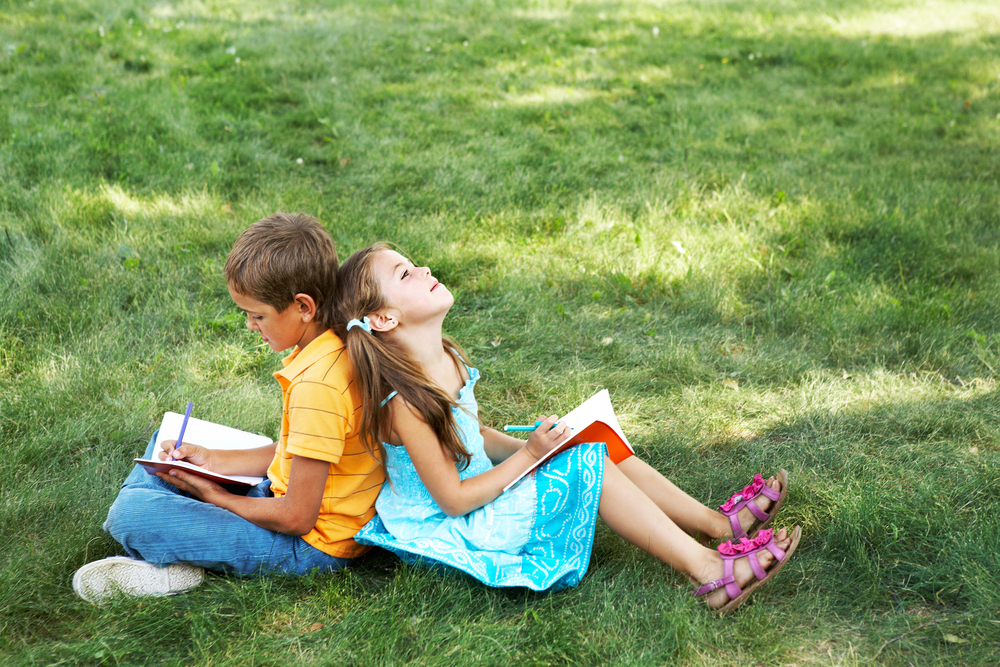Science. 1st Grade. Earth and Space Science for Kids in Grade 1
May 27, 2022
Children, especially those in the first grade, are naturally inquisitive with their surroundings. You can also find them calmly staring at the clear night sky asking questions about this seemingly different world above them while pointing their tiny fingers towards those bright twinkling illuminations. For parents, this is definitely one of the best times to feed their children’s curiosity with simple yet accurate knowledge.
Earth and Space Science is indeed a complex course yet a principal discipline nonetheless. This subject can help open up an exciting new world of knowledge that will guide the children in appreciating the nature of space as well as earth’s special spot in the universe. Earth and Space Science will enlighten a kid’s young mind as to how unique the Earth is and why it is important to proactively take steps in preserving it for the generations to come.
The science of earth and space comprises a multitude of complex concepts. Therefore, it is important for parents and teachers to utilize a simple yet efficient approach in helping children gain a comprehensive understanding of its lessons. In making your child understand what space is all about, it is best to take him/her to a quick star-gazing activity in your backyard or simply right beside his/her bedroom window.
What Is Space?
Space is a vast expanse outside the earth’s atmosphere. It begins around 100km above the Earth’s surface wherein from such point onwards, air becomes nonexistent. This simply means that humans along with all the other creatures on Earth cannot survive in space. And because space is a vacuum or devoid of air, it is impossible for sound waves to travel in this area or region. Simply put, no one will hear you scream no matter how loud you get.
It is also due to the fact that space has no air that it appears to be black. Unlike in the region inside the earth’s atmosphere, the air helps spread the light from the sun which makes the sky blue. Space is also filled with harmful radiation coming from the sun and from other distant stars. Astronauts or scientists that work in outer space, use a special type of suit to help them breathe in space while protecting them from the deadly radiations such as gamma rays and cosmic rays.
To break the ice, this exciting Spaceship Maze: Galaxies Worksheet is designed to strike a balance between learning and playing. Your child will simply guide a group of lost astronauts back to our home galaxy - the Milky Way! On the other hand, the Space: Assessment 2 Worksheet will be more about the sun and constellations which will serve as an appetizer for the next lesson.
The Solar System
Perhaps, your child may have already asked you why we have day and night or why the sky seems to be moving. Encountering such questions can be your cue to introducing the solar system to your first grader. When teaching your child about earth’s neighbors, it is best that you supplement the discussion with some interesting visuals. You can either use styro balls of different shapes or simply pull out pictures or videos from the internet about the sun and the planets that make up the solar system.
The solar system is a group of heavenly bodies gravitationally bound by a single star - and in this case, the sun. The system is composed of eight planets namely, Mercury, Venus, Earth, Mars, Jupiter, Saturn, Uranus, and Neptune alongside the dwarf planet Pluto and millions of asteroids, meteoroids, and comets.
Of the eight aforementioned planets, Mercury, Venus, Earth, and Mars are classified as the terrestrial planets. These planets are all compact and rocky surfaces. On the other hand, the other four which are the outermost members of the solar system are the gas giants. More technically known as the Jovian Planets, Jupiter, Saturn, Uranus, and Neptune are much larger in size and mass than the rocky planets and they do not have solid surfaces. And to see if your child has understood the lesson, the Solar System Quiz and The Planets: Saturn worksheets will make the learning process more engaging and fruitful.
Stars and Constellations
It’s quite common for children to marvel at the clear night sky and wonder what the bright twinkling spots are. Discussing about stars and constellations can be done more effectively through a telescope or with some visual aids such as pictures from an illustrated dictionary or from the internet.
In simple terms, stars are the massive celestial gasses that can be seen twinkling graciously in the clear night sky. The stars are made up of hydrogen gas and are able to emit light and heat energy through the process of nuclear fission which produces helium. The sun in our solar system is classified as a star. There are billions and trillions of stars in the universe and most of them are light years away.
On the other hand, constellations are a group of stars which form invisible patterns formed when the sparkling dots (stars) in the night sky are connected with each other. All in all, there are 88 known constellations that can be seen in the sky throughout the Earth. Some stars shine brighter than the others such as the ones that compose the Big Dipper which is a part of the constellation Ursa Major. And to top it all off, the Astronomer Coloring Page will make your child become more inspired in exploring the great outer space along with the learning worksheets Stars and Constellations and Night Sky Search.









.jpg)








